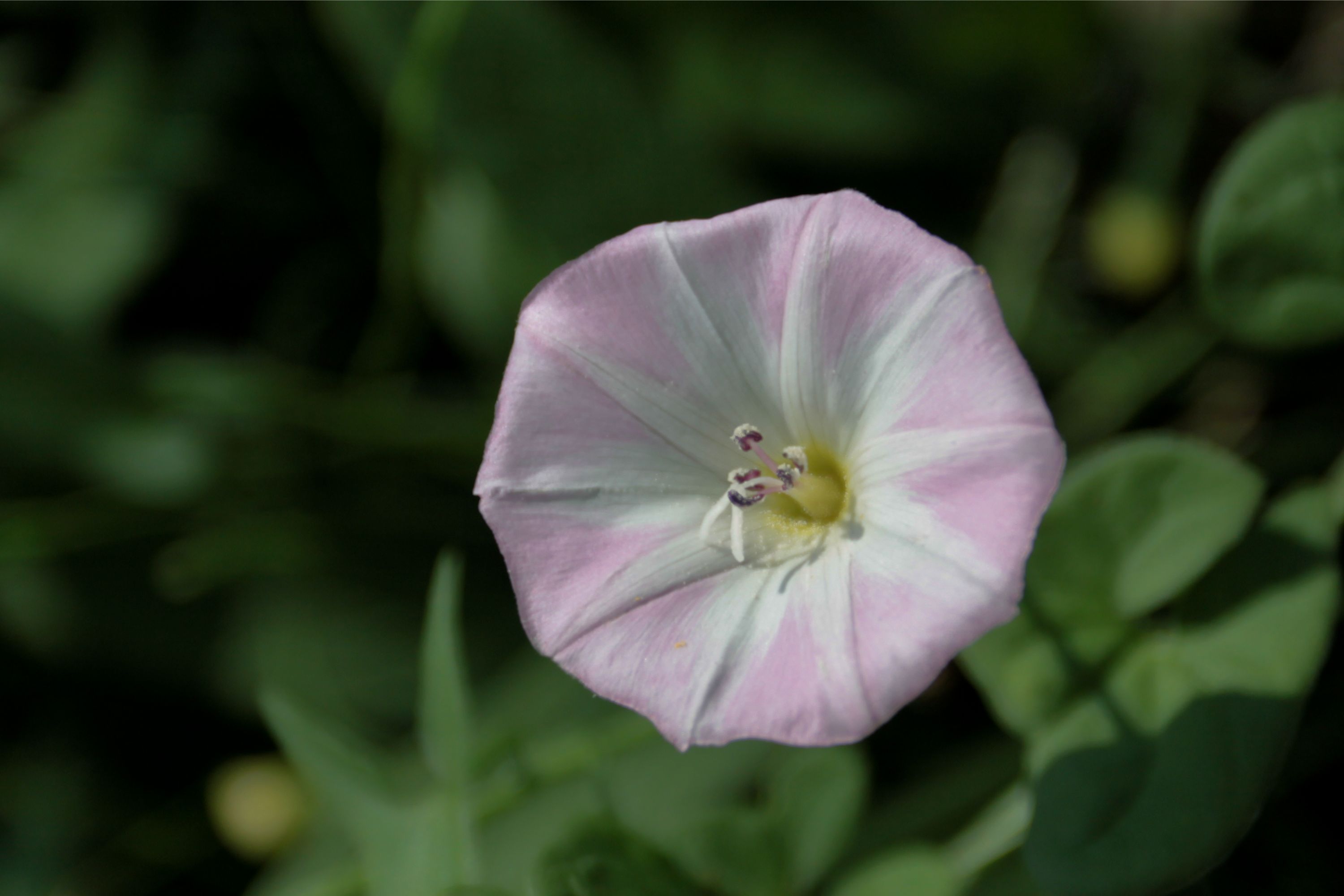Field bindweed
(Convolvulus arvensis)

Description
Convolvulus arvensis, the field bindweed, is a species of bindweed that is rhizomatous and is in the morning glory family (Convolvulaceae),native to Europe and Asia. It is a climbing or creeping herbaceous perennial plant with stems growing to 0.5–2 metres in length, usually found at ground level, with small, white and pink flowers. Other common names, mostly obsolete, include lesser bindweed, European bindweed, withy wind (in basket willow crops), perennial morning glory, small-flowered morning glory, creeping jenny, and possession vine. Convolvulus arvensis is a perennial vine. It will climb to some one metre high. Underground the vine produces more or less woody rhizomes, from which it re-sprouts in the spring, or when the above ground vines are removed. The leaves are spirally arranged, linear to arrowhead-shaped, 2–5 cm long and alternate, with a 1–3 cm petiole. The flowers are trumpet-shaped, 1–2.5 cm diameter, white or pale pink, with five slightly darker pink radial stripes. Flowering occurs in the mid-summer, (in the UK, between June and September,) when white to pale pink, funnel-shaped flowers develop. Flowers are approximately 0.75–1 in (1.9–2.5 cm) across and are subtended by small bracts. Fruit are light brown, rounded and 0.125 inches (3.2 mm) wide. Each fruit contains 2 or 4 seeds that are eaten by birds and can remain viable in the soil for decades. The stems climb by twisting around other plant stems in a counter-clockwise direction.
Taxonomic tree:







